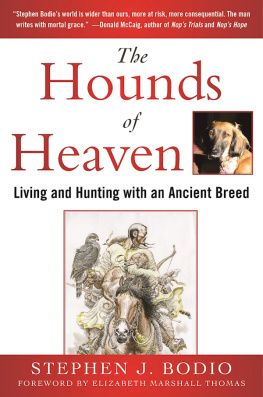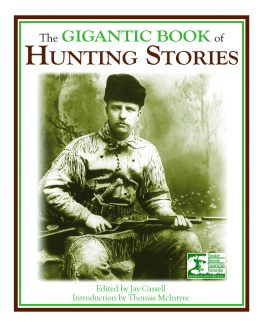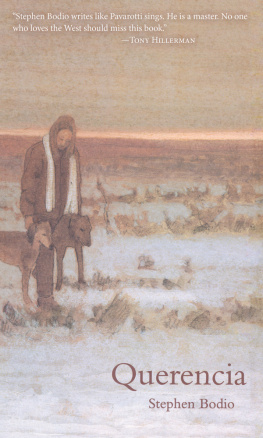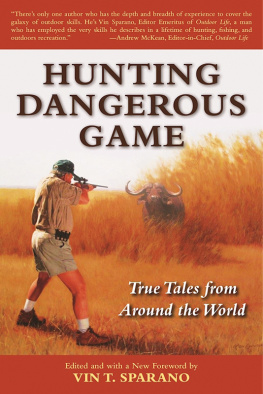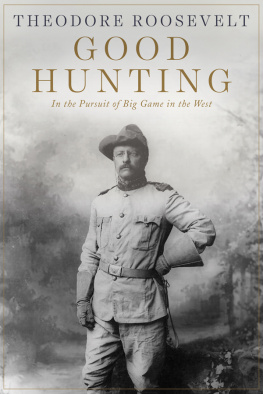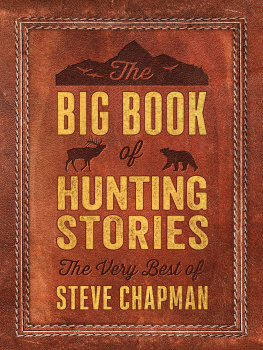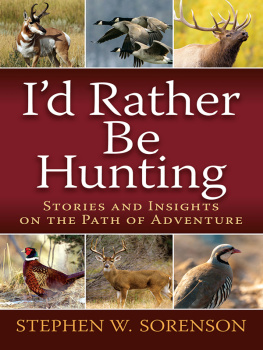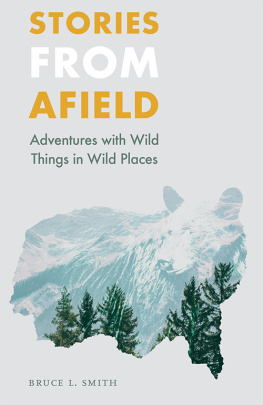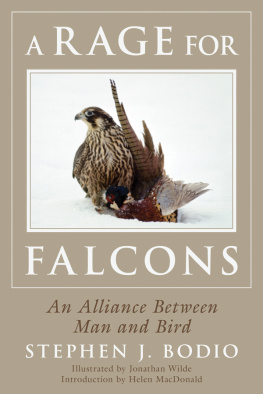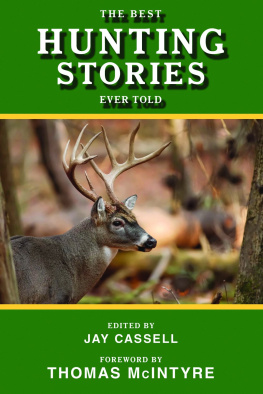F IELD AND F OREST
F IELD AND F OREST
Classic Hunting Stories
E DITED BY
S TEPHEN J. B ODIO

LYONS PRESS
Guilford, Connecticut
An imprint of Globe Pequot Press
Special contents of this edition copyright 2003, 2013 by Lyons Press
ALL RIGHTS RESERVED. No part of this book may be reproduced or transmitted in any form by any means, electronic or mechanical, including photocopying and recording, or by any information storage and retrieval system, except as may be expressly permitted in writing from the publisher. Requests for permission should be addressed to Globe Pequot Press, Attn: Rights and Permissions Department, PO Box 480, Guilford, CT 06437.
Lyons Press is an imprint of Globe Pequot Press.
Project editor: Meredith Dias
Layout: Sue Murray
Library of Congress Cataloging-in-Publication Data is available on file.
ISBN 978-0-7627-9288-7
E-ISBN 978-0-7627-9966-4
Printed in the United States of America
INTRODUCTION
By Stephen Bodio
This is a collection of tales written in the late nine teenth and early twentieth centuries, from the Civil War to around 1930: the time that some historically minded outdoorsmen wistfully call the Golden Age. For hunters it was a great time to be alive, maybe the best; I must admit I would have loved it. Almost any corner of the globe was open to someone with a little money and a lot of determination. All the great gun designs had assumed their final form, from lever-action Winchesters, through bolt actions like the Mannlicher-Schoenauer 03 and the Mauser 98, up to the finest hammerless double-barreled shotguns from Londons bespoke shops. These were the glory years of paper journalism, when print was king, and the standard of everyday disposable writing was higher than it has been since. Hunting was still prestigious, and expeditions to track game by the likes of Teddy Roosevelt or New York socialite Suydam Cutting attracted the sponsorship of great museums. Such popular writers as Zane Grey and Ernest Thompson Seton shared space in magazines with scientists Roy Chapman Andrews, William Beebe, and William T. Hornaday, and even former-president Teddy Roosevelt.
Although I said men, this was also the first era when wealthy adventurous women went hunting on safari in Africa, even bought plantations there, and wrote as knowledgeably as their male peers. At home they shot quail or went to the plains for prairie chickens in the fall; some, unlike most of their male companions, were not embarrassed to tell you how to cook your quarry as well.
I have left out the kind of tales that a contemporary writer calls I knew an old dog who died stories and cute ones where the hunter dies in the last sentence or wakes up in a heaven (or hell) full of grouse. I have added one sentimental but factual story, Setons Lobo, a good tale and a historical marker: The first two pro-wolf writings anywhere are by reformed American wolf trappers, Seton and Aldo Leopold, and the story itself lives on with the current wolf wars. A Korean publisher recently published the tale as a book!
Instead, Field and Forest is for the most part a collection of true chronicles, pieces that celebrate a time when the entire world was a sportsmans playground, when literate people might use one of the worlds finest double guns to shoot quail as guests on a private plantation or raise a sporting rifle to dutifully kill two man-eating lions that raided the Empires construction camp on the Uganda Railway. It was a more innocent time, one that unquestioningly accepted the existence of blood sports but was more playful; the head scientist of a Mongolian paleontological expedition could chase antelope and wolves across the steppes with his car and then write gleefully about it in a popular magazine. If chasing wolves with packs of borzois on an Imperial Russian estate seemed exotic to its Western chroniclers, remember that similar hunts, minus only the lines of serfs, were and still are taking place on the North American plains. Custer and Roosevelt both ran wolfhounds.
Some of the stories in this collection are about practices still popular in the unreconstructed West where I live. I have more than a few neighbors who run packs of lion and bear hounds; at least one family is also well known for its activism in conservation circles. But in the late 1990s, when Arizona rancher and guide Warner Glenn rediscovered the American jaguar with his pack of hounds (he photographed it, let it go, and started an organization to preserve its kind), modern journalism seems to have collectively decided to ignore the hunter and the wandering American jaguar. The only popular magazine article about the discovery I ever saw appeared in the Moscow-based hunting and fishing magazine Oxota, in Russian! Such stories were commonplace on the newsstands of my youth, as late as the 1950s; today, in several states hunting with hounds is against the law. In this book we have one of the tales that invented the fast-disappearing genre: Zane Greys Tiges Lion.
There is a gentler side to Field and Forest as well. The Forest and the Steppe by Ivan Turgenev is like an impressionist painting or a tone poem, evoking in a distant place and time Russias most beautiful landscapes and seasons. It is so evocative and moving in its melancholy that I try to read it at least a couple times a year; I suspect you will too. Grace Gallatin Thompson Setons piece on hunting an antelope prefigures todays thoughtful hunting stories as, having killed her first antelope, she both rejoices in her shot and allows herself to mourn the death of her quarry.
If you hunt, and read, these stories will resonate with you. If you dont hunt, they may at the very least entertain youand make you feel, dream, think, and realize that progress is not always what it seems.
Steve Bodio
Magdalena, New Mexico
March 2013
F IELD AND F OREST:
C LASSIC H UNTING S TORIES
The Prairie Chicken
The Pinnated Grouse. The Sharp-Tailed GrouseFrom Game Bird Shooting, 1931Capt. Charles Askins
My first real chicken hunt occurred in the Osage Nation of the Indian Territory in the late eighties. There were three of us, with a team, a wagon and a pair of dogs.
The dogs were ranging ahead and we followed in the wagon. Nothing had stirred from the tall prairie grass.
I noticed that some dwarf postoaks well ahead of us seemed to be conspicuously filled with birds nests, fifty to the tree and many trees loaded. What are they? I asked.
The driver said Chickens, and I whipped out and on ahead with my dogs. Soon the chickens flew out of the trees, hundreds of them; but there were others on the ground that didnt fly. The dog pointed, and I shot at a chicken, missing with both barrels at about thirty yards.
All around me the chickens climbed out, cackling. They didnt fly far, and they put up three bevies of quail in their flight.
Getting out the empty brass shells and reloading as fast as I could, I was interrupted by a shout from the wagon. Looking back, I saw eleven deer, coming from the timber, crossing an opening within a hundred yards of me, the does in front, bucks behind, galloping slowly, unafraid.
The driver grabbed his old Sharps rifle, but couldnt find his cartridges in time. He finally shot and missed.
As the deer entered the next clump of oaks, a great flock of large black colored birds, looking not unlike crows in the distance, took wing and went into the timber with the deer.
We estimated that bunch of wild turkeys as containing three hundred birds, and I never since have seen another such flock.
The driver tied his team and followed the deer. The oldtimer took his shotgun and followed the turkeys. Taking the dogs, I went on down into a lush grassy valley, along a branch, where the chickens and the quail had gone.
Next page

